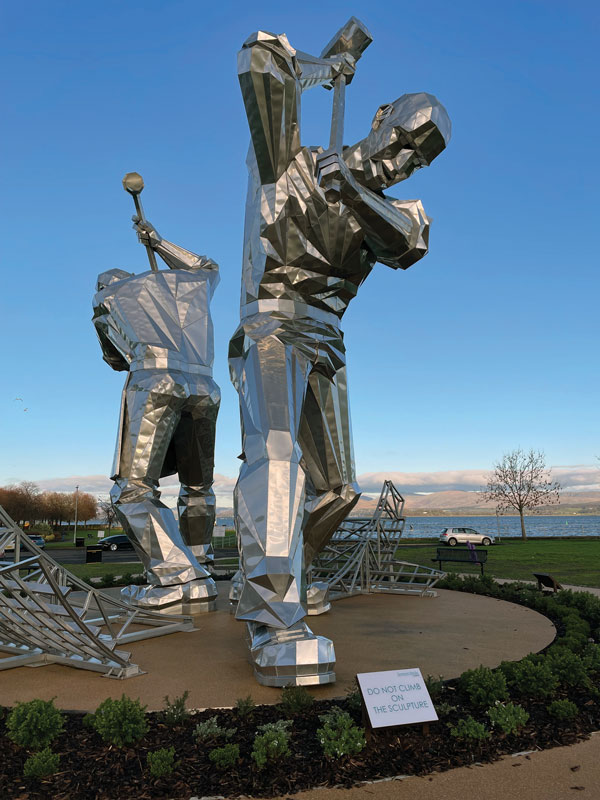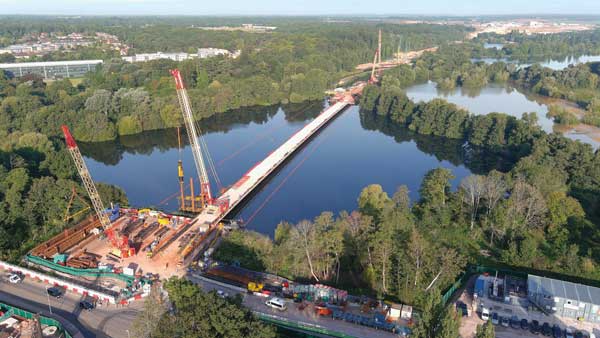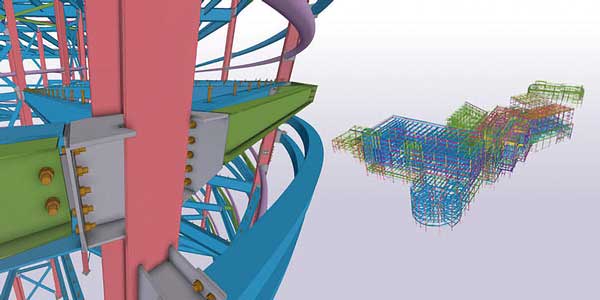SSDA Awards
MERIT: Shipbuilders of Port Glasgow
Celebrating a rich shipbuilding heritage, two 10m-high stainless steel figures, by renowned sculptor John McKenna, also serve as tourist attractions, bringing people to Inverclyde.
FACT FILE
Sculptor: John McKenna Sculptor Ltd
Structural engineer: Narro
Main contractor: John McKenna Sculptor Ltd
Client: Inverclyde Council
Located in Coronation Park, Port Glasgow, two steel figures of workers in active positions about to strike downwards with their hammers has been installed to pay tribute to the area’s shipbuilding history.
The structural form of the large figures echoes the technique of building ships, with the surface skin being steel plates that are welded to a steel subframe and associated ribs. This is said to maximise the mass of the structure, while minimising the weight of steel required to create it.
Councillor Michael McCormick, Inverclyde Council’s convener of environment and regeneration, says: “The delivery of these sculptures has been a long time coming and much has been said about them but it’s now clear to see that they are quite spectacular and the reaction thus far suggests they are well on their way to becoming an icon of Inverclyde and the west of Scotland.
Initially, a scaled down version of the proposed sculpture was made in clay, which was 3D scanned and transferred into to CAD software. This was used to establish a best fit ‘stick form’ primary skeleton for one of the figures. Close liaison within the project team was required to ensure that the skeleton could be split up into a series of segments that could readily be fabricated, transported to site and subsequently erected. Once the ‘stick form’ primary skeleton geometry had been agreed, a 3D structural analysis model was created to design the structural elements.
The primary skeleton comprises a series of circular hollow sections (CHS), with flanged bolted connections. Welded to this are the square hollow sections (SHS) and steel rod secondary elements that act as outriggers to reach the SHS tertiary outer sub-frame that is located just under the 0.9mm to 1.2mm stainless steel faceted surface ‘skin’.
“The of use of steel bolted connections to connect the segments of the primary frame together meant that test builds could be carried out at John McKenna’s workshop, prior to them being transported to site in segments and reconnected,” explains Narro Senior Associate Ian Downie.
Flexibility in the exact positions of the secondary frame and tertiary outer sub-frame was desirable, so exact positions could be finalised based on ease of access and buildability issues during the fabrication. As a result, the secondary and tertiary elements in the overall figure were not modelled, and instead the design was based on spacing rules that could be followed during fabrication to ensure there was sufficient structural capacity in the completed frame.
Sculptor John McKenna says: “When my design of the shipbuilders sculpture was overwhelmingly voted for by the people of Port Glasgow I was absolutely thrilled that my vision for the artwork would be realised. It was no easy task to design and complete the sculpture, a complete unique one-off, a dynamic pose, the colossal pair swinging their riveting hammers, trying to evoke working together.”
The judges say an impressive and well executed piece of public art, which has been many years in realisation since the initial competition win. The sculpture is formed from numerous small folded/shaped stainless steel ‘tiles’ fixed back to a steel tube subframe, shaped to create the large forms of two shipbuilders.













